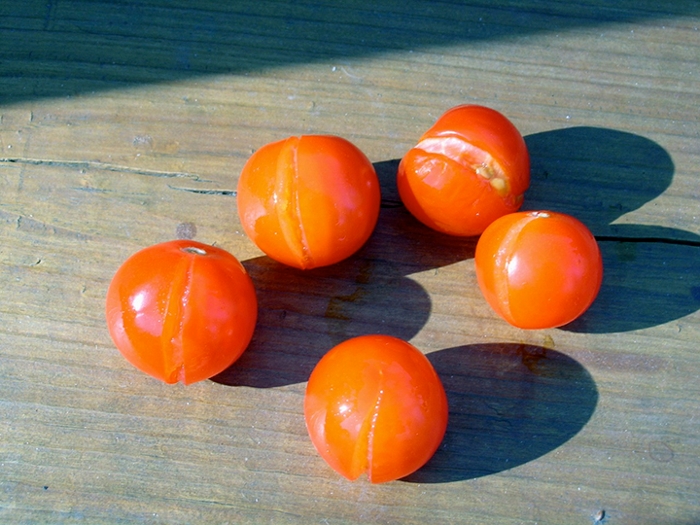Splits or cracks in roots or vegetable fruits are generally caused by a dry period followed by over-watering or a long periods of rain. This produces sudden growth and the root takes up too much water and causes the flesh to split. This is especially common in tomatoes.
Symptoms in carrots, parsnips and radishes, are similar to symptoms in fruits: cracks or splits appear in the flesh of roots. Cabbages heads are prone to splitting, especially early maturing varieties.
Wetter fruits typically pick up a secondary bacterial infection from the environment fairly quickly and will begin to degrade.
Fruits and vegetables with minor splits can be eaten right away, but anything that is showing signs of infection such as slime, discolouration, or mold should be composted. Roots tend to be less prone to secondary infections and while the crack may be unsightly, they can usually be eaten.
Control (general):
- Improve garden soil by adding well-rotted manure or compost. Cover soil with an ample layer of mulch. This will increase water holding capacity during drought, preventing uneven watering.
- Water root crops regularly to ensure even growth of the roots.
Control (cabbages):
- Split cabbages should be harvested, trimmed and used right away before fungal or bacterial diseases set in. Consider harvesting the rest of your crop if they have mature, firm heads. If the rest of your cabbages are immature but otherwise okay, you can avoid further splitting by severing the roots on one side of the plant with a shovel. Another way is to twist the head about a quarter turn to sever some of the roots. This will slow the amount of moisture that the plant receives and may reduce splitting in the rest of your crop. Use your best judgment about doing this based on which type of cabbage you're growing and your local weather conditions.


